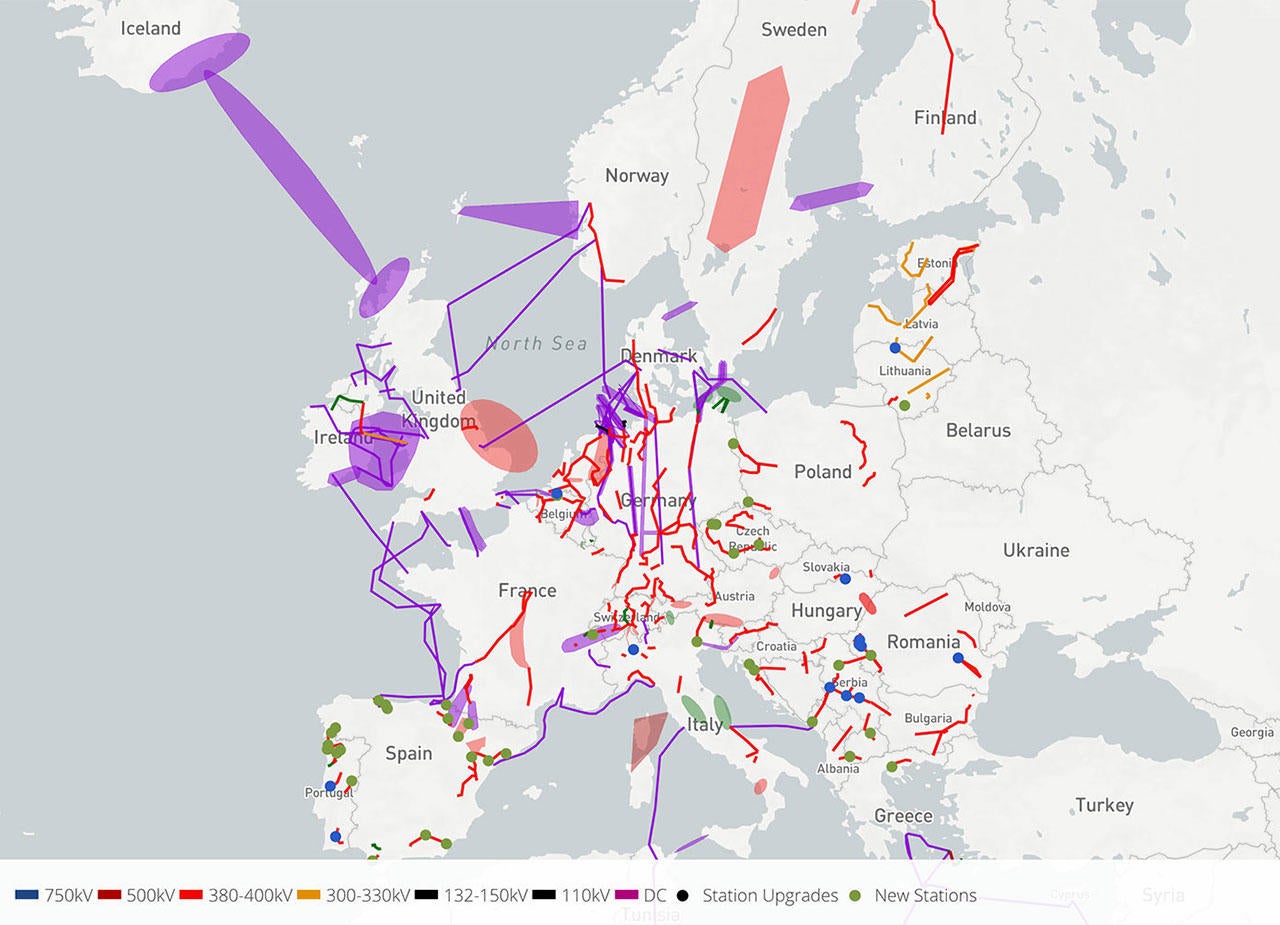Considering the growth in the number of high voltage direct current (HVDC) links across Europe and Canada, future HDVC networks are envisioned to have a multi-terminal direct current (MTDC) configuration. An MTDC grid facilitates the connection of various networks with diverse renewable energy portfolios to efficiently balance the supply and demand. An MTDC grid can utilize long underground and subsea HVDC cables which reduce the permitting time and public opposition against building overhead lines. MTDC grids can also provide ancillary services to the AC system. An MTDC grid has not been built in practice yet, and its realization relies on resolving three main challenges: protection, control, and interoperability. My current research focuses on overcoming these challenges and will pave the road for future realization of an MTDC grid.
The 2016 editi on of the 10-year Network Development Plan (TYNDP) of the European Network of Transmission System Operators for Electricity (ENTSOE)
on of the 10-year Network Development Plan (TYNDP) of the European Network of Transmission System Operators for Electricity (ENTSOE)
Source: http://tyndp.entsoe.eu/2016/
Advanced Control System Development for MTDC Grids:
Although various control approaches have been proposed for MTDC grids, there is no census on how the MTDC grid control system should be designed. There is still a significant need to investigate the various control approaches to satisfy all the control requirements for a large MTDC grid. Examples include high reliability, plug and play capability to provide interoperability of different converters, the capability to accommodate the integration of electrical islands, and primary frequency reserve sharing for unsynchronized AC systems.
In this research pathway, my research team studies various control strategies, implement them into sample MTDC grids and compare them against each other. The sensitivity of various control strategies to system parameters and configurations will be evaluated. Furthermore, the interaction level among converter controllers will be determined, and a coordinated strategy will be developed to minimize the interactions. Moreover, the control strategies will be augmented to allow for frequency support exchange among AC networks and enable MTDC grid participation in primary frequency control. Additionally, advanced controllers which provide various secondary control features such as dynamic stability enhancement will be designed.
Advanced Protection System Development for MTDC Grids:
The fault phenomenon in a DC system is different from that in an AC grid and is one order of magnitude faster. Therefore, faults in DC grids should be detected and removed in the order of milliseconds to prevent damages to the power electronics components. A protection system consists of several components that contribute to the detection and removal of faults, including transducers, relays, circuit breakers (CB), and the supporting communications system. There are several main requirements for protection systems associated with MTDC systems, e.g., sensitivity, high speed, and selectivity.
In this research pathway, my research team will perform a cost-benefit analysis to compare various protection strategies based on protection system reliability, cost, and speed. In addition, several primary and backup relaying algorithms will be developed. The performance analysis and comparison of the three main types of DC CBs, i.e., electromechanical, pure solid-state and hybrid, will be carried out.
To facilitate the future expansion of MTDC grids, the feasibility of having an MTDC grid protection system built by multiple vendors will be investigated. Furthermore, restoration of MTDC grids with various converter topologies will be addressed. Moreover, interactions between control and protection systems will be identified and advanced techniques will be developed to minimize the interactions and improve grid performance as a whole.
